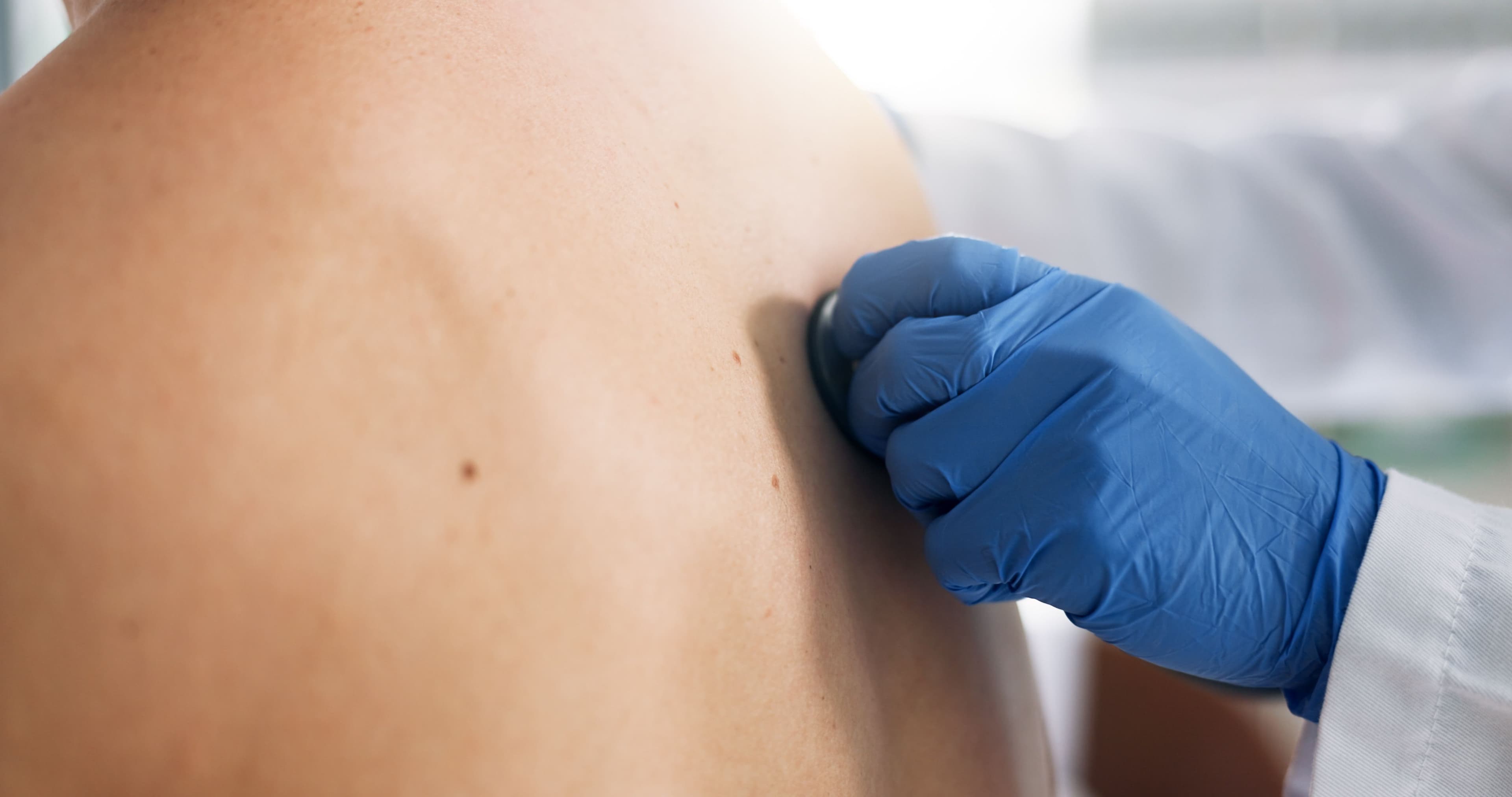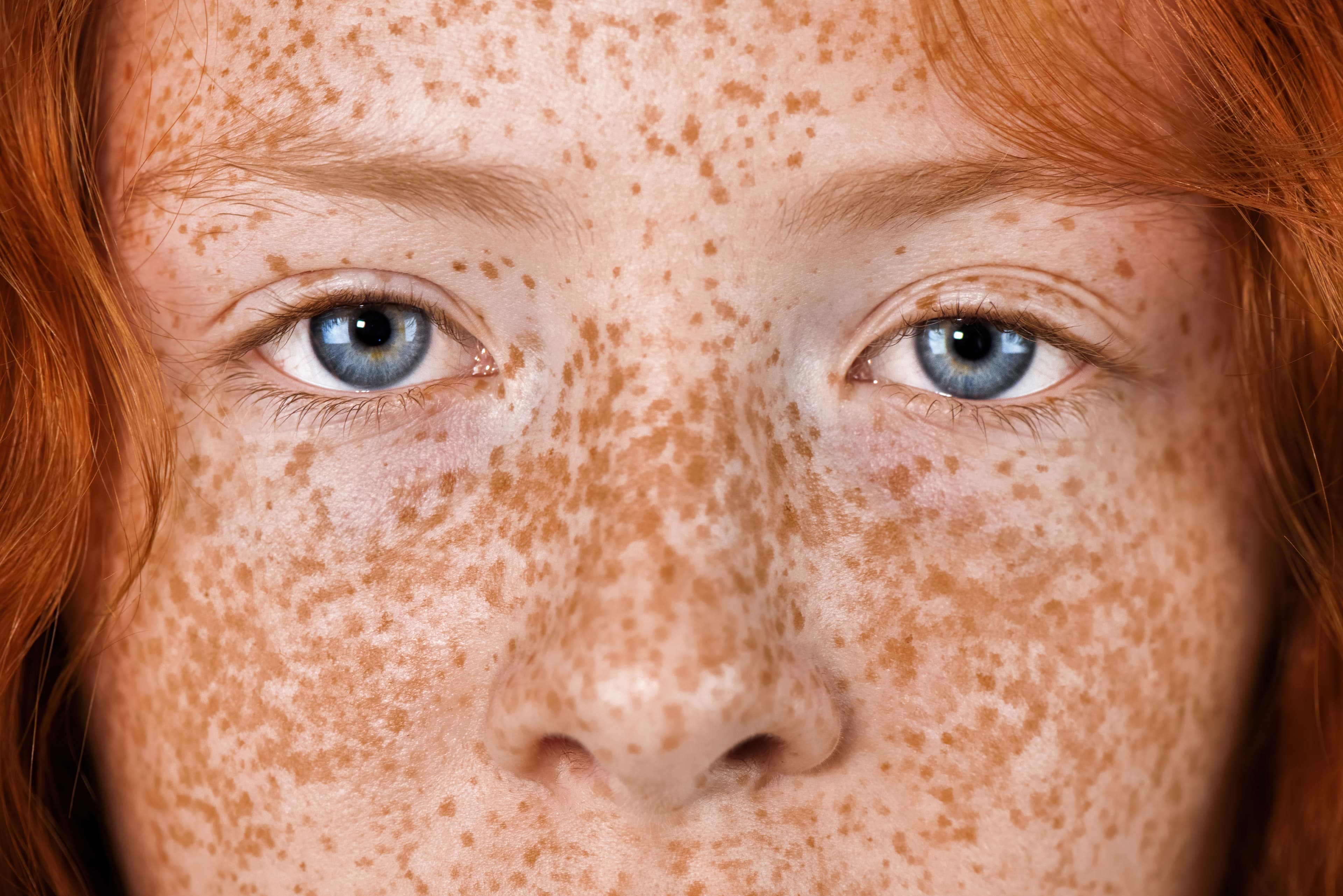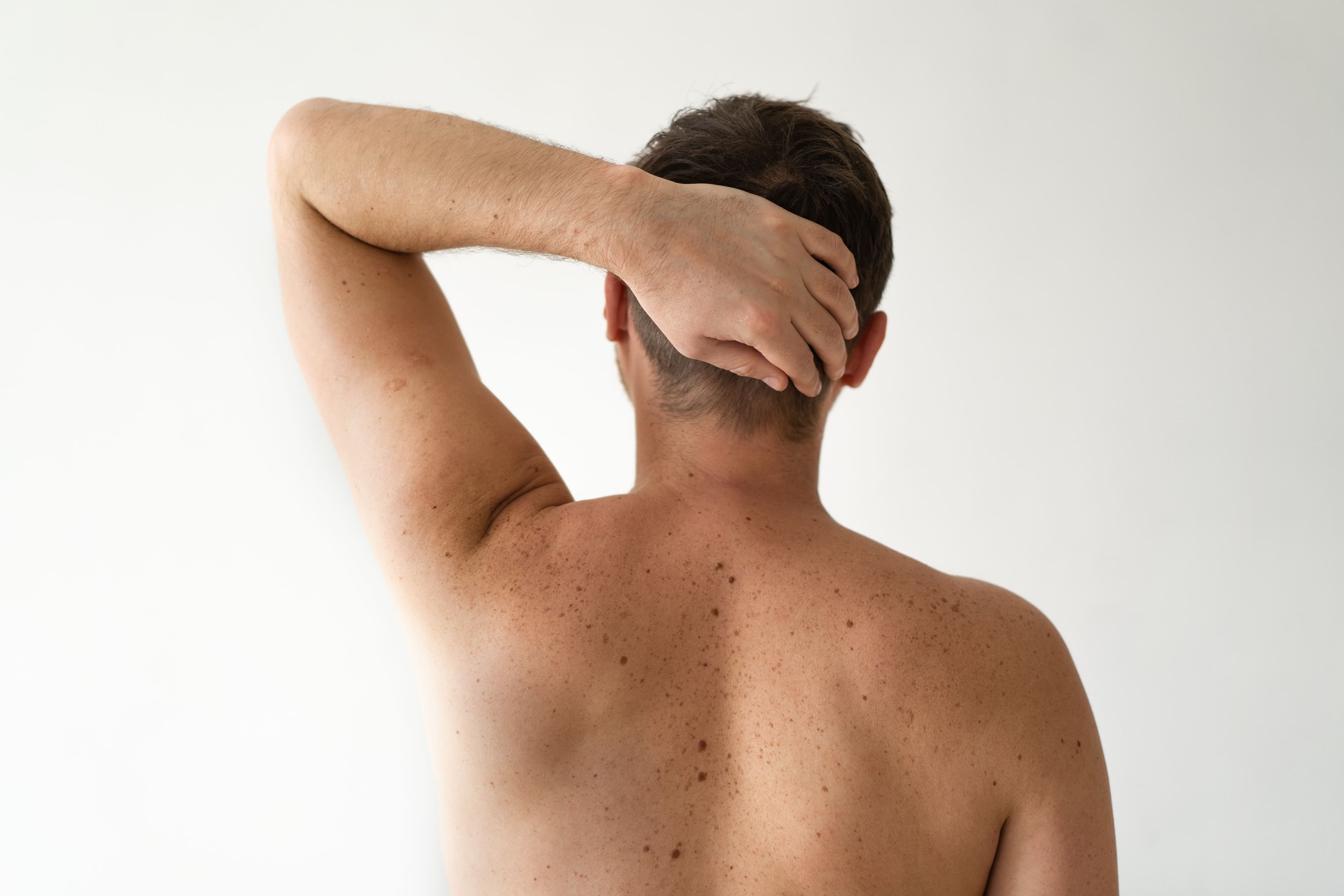6 Lung Cancer Symptoms on Skin: When to Consult a Doctor

Dr. Vrundali Kannoth•6 minutes•10 Oct 2025
Skin Clues You Shouldn’t Ignore: Rare Lung Cancer Symptoms on Skin
It wouldn't naturally cross anyone's mind to associate skin changes with lung cancer. Therefore, when a new lump, discoloured patch, or rash appears, you'd dismiss it as a weather change, an allergic reaction, or maybe even stress.
In this guide, we'll walk you through what lung cancer symptoms on skin might look like, why they appear, and what they could mean. While they indicate a later stage of cancer, recognising them now is an important first step toward understanding what's going on.
How and why can lung cancer affect the skin?
Let's understand why a persistent rash, which does not improve despite taking 5 Allegra a day, could indicate the presence of lung cancer.
- •Cancer cells can spreadfrom the lungs to the skin (metastatic lung cancer[1]), forming firm, painless lumps on the chest, back, or shoulders. These are called metastatic skin lesions and usually signal an advanced stage. Read our blog on metastatic lung cancer.
- •Skin reacts to substances/hormonesreleased by the tumour. Known as paraneoplastic syndromes, they cause lung cancer skin rashes, dark patches, or redness and swelling. Note that this does not necessarily mean skin cancer.
- •Pancoast tumoursat the top of the lung wall can press on nearby nerves and blood vessels. This leads to skin changes in the neck, chest, or arms, like swelling or colour changes.
- •Lack of oxygenin cells and tissues. This includes bruising easily, noticing dead skin patches, or muscles feeling weaker.
6 notable signs of lung cancer symptoms on skin
Lung cancer symptoms on skin don't all look the same. Some occur overnight, like a new lump or rash. Others form over time, like fingertips changing shape or skin getting darker, which you may not notice as it's happening.

If you do realise your skin looks different than usual and want to eliminate the possibility of something serious, here's a list of common signs that may point back to lung cancer:
- 1. Persistent jaundiceYellowing of the skin and eyes can occur if the cancer has spread to the liver, affecting bile flow. It's one of the first external signs of internal organ involvement, particularly in advanced cases.
- 2. Facial changesIf a tumour presses against the superior vena cava (a major vein that returns blood to the heart), it can cause swelling in the face, neck, or arms. Some people also notice a flushed or reddish appearance, especially in the mornings, accompanied by an imbalance in facial sweating.
- 3. Skin metastasisAccording to a study, skin is the first site of metastasis in 25% of cases of lung cancer. These look like firm, flesh-coloured or reddish nodules, often appearing on the chest, back, scalp, or abdomen. These lung cancer skin rashes may feel rubbery and painless and can sometimes ulcerate.
- 4. HyperpigmentationSudden darkening or lightening of the skin in folds like the armpits or neck is a sign of rare lung cancers, especially small cell types[2]. This can happen through paraneoplastic syndromes, causing hormone alterations like melanin overproduction. Read our blog on small cell vs non-small cell lung cancer.
- 5. Clubbing of fingers and nail changesThese are the kinds of lung cancer symptoms on skin that we mentioned would happen over time. Rounded fingertips and curved nails, often paired with soft nail beds, can indicate long-term oxygen deprivation in the tissue.
- 6. DermatomyositisThis inflammatory skin condition causes a violet or dusky red rash on the eyelids, chest, or hands, and usually comes with muscle weakness. Though rare, dermatomyositis can be paraneoplastic lung cancer symptoms on skin.
What to do if you suspect lung cancer symptoms on skin?

Let's take a look at some real cases of how lung cancer manifests as skin conditions and when you should visit the doctor:
- •If you see visible lung cancer symptoms on skin before other signsA 66-year-old man noticed bluish, tender nodules on his chest, neck, groin, and thigh. They appeared a month before he was hospitalised for weakness and breathlessness. The nodules were later linked to lung cancer. Lung cancer spreads rapidly, so waiting even a week can be fatal.
- •If you suspect asymptomatic lung cancerA 45-year-old smoker arrived with small, painful skin nodules on his head, neck, and chest. Despite having no respiratory symptoms, the nodules appeared two weeks prior and were an early sign of metastasis. Lung cancer is mostly detected after respiratory symptoms, but these rare early signs of lung cancer symptoms on skin manifestation helped with faster diagnosis.
- •If your skin conditions keep getting worseA 55-year-old man developed a fast-growing skin nodule on his upper back that ulcerated and required surgery. Biopsies confirmed it was a spread from squamous cell lung cancer. Rapid changes in skin lesions, especially ulcerating ones, raise suspicion for internal malignancies.
- •If you have pre-existing conditionsA 48-year-old male with past tuberculosis presented with weight loss, hoarseness, and a large reddish lump at the back of his head. Further investigation revealed it was a cutaneous metastasis from advanced lung cancer. Many cancer symptoms can be misdiagnosed. Always go for a second opinion if you think something is wrong.
Final thoughts: Don't overlook the surface
Lung cancer symptoms on skin are rare, but when they do appear, they signal that the disease has progressed. That's why a skin change, something that seems small or unrelated, can sometimes be the alarm you need.
If you're unsure about what you're seeing, consider getting a dermatologist's opinion alongside a general physician or pulmonologist. Some hospitals also offer cancer screening drives, where specialists work together to speed up diagnosis.
FAQs on lung cancer symptoms on skin
Silent symptoms include fatigue, unexplained weight loss, mild shortness of breath, or a lingering cough that doesn't seem serious at first. These signs are usually dismissed or misdiagnosed as other conditions. It is only later, when they get worse that lung cancer can be diagnosed.
Many people don't feel lung cancer in its early stages. Symptoms appear only after the cancer has grown or spread. Symptoms you can physically feel present as a persistent cough, chest discomfort, or fatigue in more advanced stages. Lung cancer symptoms on skin are indicators that the cancer has spread.
The "5 finger test" is a home test for checking clubbing of the fingers. Press your fingernails against each other, and if a diamond shape is not formed, it may indicate clubbing. Any concerns should be followed up with imaging and clinical tests.
A lung cancer skin rash may appear as red, itchy, or inflamed patches. Some types, like dermatomyositis, cause purple or violet discolouration. Others, like cutaneous metastases, may form firm, painless nodules under the skin.
